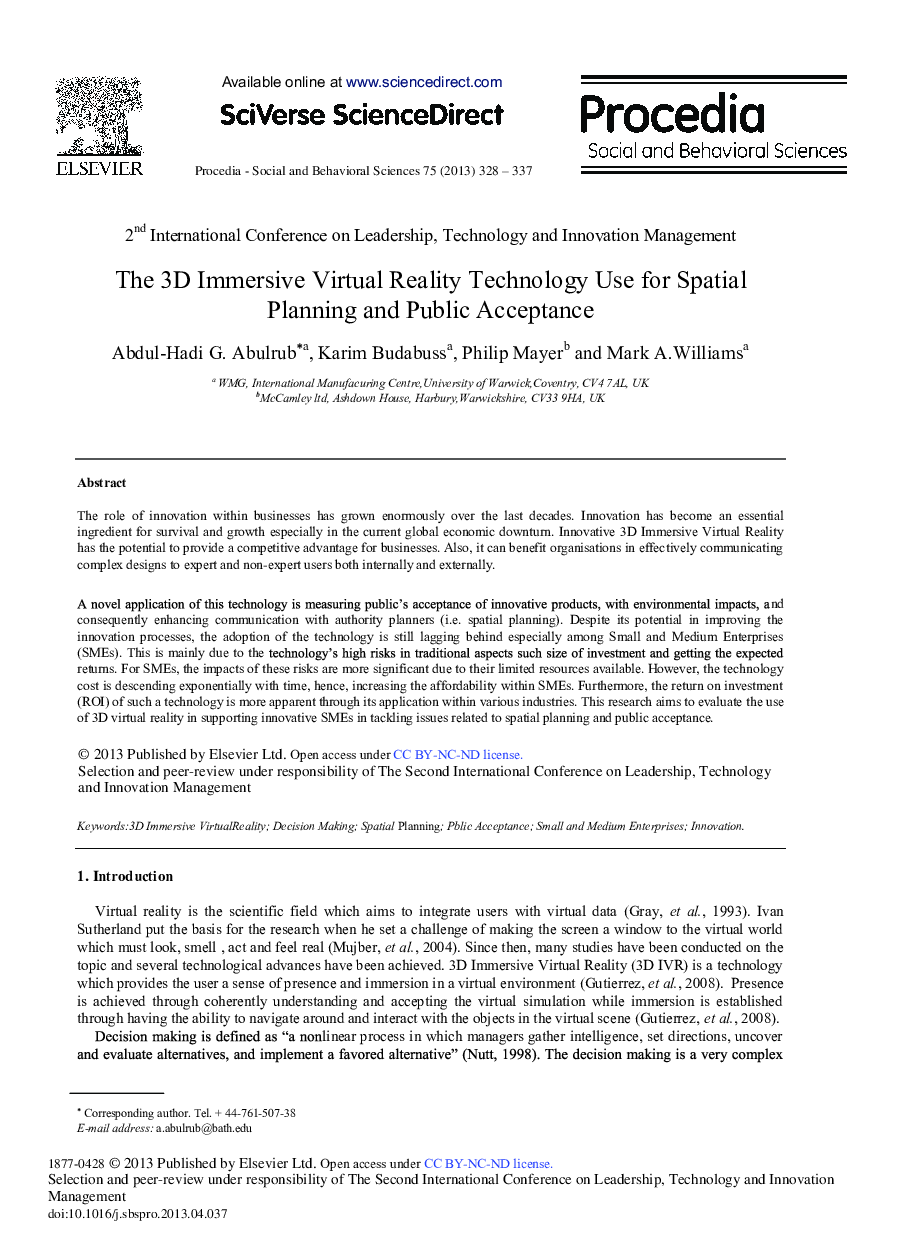| Article ID | Journal | Published Year | Pages | File Type |
|---|---|---|---|---|
| 1120015 | Procedia - Social and Behavioral Sciences | 2013 | 10 Pages |
The role of innovation within businesses has grown enormously over the last decades. Innovation has become an essential ingredient for survival and growth especially in the current global economic downturn. Innovative 3D Immersive Virtual Reality has the potential to provide a competitive advantage for businesses. Also, it can benefit organisations in effectively communicating complex designs to expert and non-expert users both internally and externally.A novel application of this technology is measuring public's acceptance of innovative products, with environmental impacts, and consequently enhancing communication with authority planners (i.e. spatial planning). Despite its potential in improving the innovation processes, the adoption of the technology is still lagging behind especially among Small and Medium Enterprises (SMEs). This is mainly due to the technology's high risks in traditional aspects such size of investment and getting the expected returns. For SMEs, the impacts of these risks are more significant due to their limited resources available. However, the technology cost is descending exponentially with time, hence, increasing the affordability within SMEs. Furthermore, the return on investment (ROI) of such a technology is more apparent through its application within various industries. This research aims to evaluate the use of 3D virtual reality in supporting innovative SMEs in tackling issues related to spatial planning and public acceptance.
